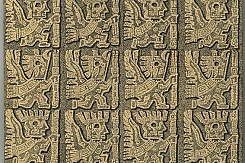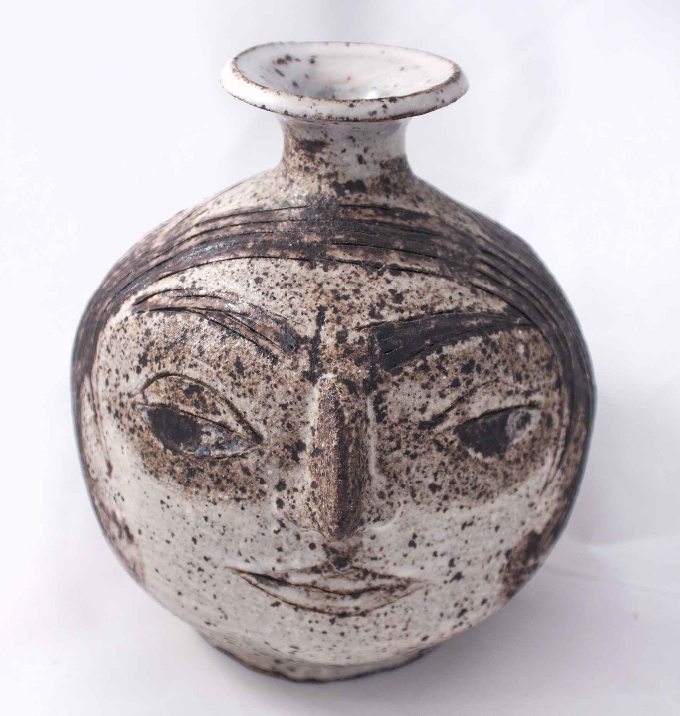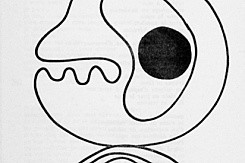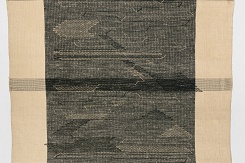Learning From

Paul Klee, Teppich, 1927, Hans-Willem Snoeck, Brooklyn, New York, Foto © Edward Watkins.

Book cover of Ernst Fuhrmann: Tlinkit und Haida, Folkwang Verlag GmbH, Hagen 1922.
Raoul D’Harcourt: Textiles of Ancient Peru and their Techniques, University of Washington Press, Seattle 1962.

Arthur Baessler collection, Shirt, Tiahuanaco (=Tiwanaku), 0–700 (?), Peru
© Ethnologisches Museum der Staatlichen Museen zu Berlin – Preußischer Kulturbesitz, photo: Claudia Obrocki.
Anni Alber, Black–White–Gray, 1927, © The Josef and Anni Albers Foundation / VG Bild-Kunst, Bonn 2019.

Josef Albers, Loggia Wall at RIT, 1967
The Josef and Anni Albers Foundation, © The Josef and Anni Albers Foundatio / VG Bild-Kunst, Bonn 2019.
.jpg?w=964)
Rose Slivka, "New Tapestry", in: Craft Horizons, March/April 1963
Lena Bergner, Draft of a hand loom, ca. 1936–39, Bauhaus Dessau Foundation
© American Craft Council / Heirs to Lena Bergner.

Eduard Gaffron Collection, Khipu, Inca 1450–1550, Huacho, Peru
© Photo: Ethnologisches Museum der Staatlichen Museen zu Berlin – Preußischer Kulturbesitz, photo: Claudia Obrocki.

Anne Wilson, "Net Fence" detail, 1975, Cotton and jute cord, raffia, bamboo supports, 96 x 45 x 20 inches overall.
Courtesy of the artist.

Lenore Tawney, Mask, ca. 1967, Linen, pre-Columbian beads, shell, horsehair
Photos: George Erml; Courtesy: Lenore G. Tawney Foundation.
.jpg?w=964)
Marguerite Wildenhain, Double Face pot, 1960–70, Luther College, Decorah, photo: Grant Watson, © Luther College.

Kader Attia, Signs of Reappropriation as Repair, 2017, Single projection of 80 slides, Courtesy of the artist.

from: Maghreb Art Magazine, No. 3, 1965, © Mohamed Melehi.

Poster exhibition of Farid Belkahia, Mohamed Chabâa, Mohamed Melehi, Théâtre National
Mohamed V, design: Mohamed Melehi, 1965, Toni Maraini Collection, © Mohamed Melehi.
Painted ceiling of Mohamed Melehi, Hotel Les Roses du Dades, Kelaa M'Gouna, 1968–69
Architects: cabinet Faraoui et de Mazières, archives: Faraoui et de Mazières.

Door from the Musée Tiskiwin, Collection of Bert Flint, photo: Maud Houssais.
Ausgehend von Paul Klees Zeichnung Teppich aus dem Jahr 1927 stellt das Ausstellungskapitel Learning From künstlerische Forschung zu außereuropäischen Handwerkstechniken und Alltagskulturen ins Zentrum. Das Studium vormoderner Handwerkskunst war Teil des Bauhausprogramms, das dem manuell hergestellten Objekt und dem damit verbundenen Wissen große Bedeutung zuwies. Die Beschäftigung mit vormodernen, auch außereuropäischen Artefakten und Praktiken zieht sich kontinuierlich durch die Arbeit von Bauhauslehrenden und -studierenden, auch über ihr Wirken in Deutschland nach 1933 hinaus.
Die künstlerische Erforschung lokaler Handwerkspraktiken in Nord-, Mittel- und Südamerika und die Wiederbelebung präkolonialer Kulturen trugen Mitte des 20. Jahrhunderts dazu bei, die Formensprache der Abstraktion sowie neue Verfahrensweisen in der Weberei zu entwickeln und die Kunstrichtung der Fiber Art zu etablieren. Allerdings berücksichtigte das Studium nichtwestlicher Kunst- und Kulturpraxis weder die koloniale, zu Teilen gewalttätige und illegitime Inbesitznahme von Kulturgütern, noch die soziale, ökonomische und politische Zerrüttung, die der europäische Kolonialismus in Nord- und Südamerika, Afrika und Asien hinterlassen hat und die bis heute nachwirkt.
Die Wertschätzung der lokalen Kulturproduktion in Brasilien ist so eher als ein Gegenentwurf zur europäischen Moderne zu lesen, in der die koloniale Gewalt gegen die indigene Bevölkerung fortwirkte. Im Prozess der kulturellen Dekolonisierung im postrevolutionären Mexiko und postkolonialen Marokko erhielt die Programmatik, präkoloniale Kulturproduktion in die Sprache der Moderne zu übersetzen, wiederum eine gesellschaftspolitische Dimension – was beispielsweise der Rückgriff auf lokale Kunstpraktiken durch die Werkstatt für populäre Grafik in Mexiko oder die École des Beaux-Arts in Casablanca belegt. Learning From zeigt, dass die Bauhausmoderne einerseits transkulturellen Begegnungen und asymmetrischen Machtverhältnissen geschuldet war. Andererseits brachte die Synthese vormoderner und moderner Künste im Kontext von Dekolonisierung und kultureller Selbstbestimmung auch Ansätze hervor, die koloniale und patriarchale Kulturpraktiken überwinden wollten.
Learning From wurde mit dem SESC Pompeia (São Paulo) und dem Haus der Kulturen der Welt (Berlin) realisiert, in Kooperation mit Elissa Auther, Erin Alexa Freedman (New York City), Anja Guttenberger (Berlin), Maud Houssais (Rabat), Luiza Proença (São Paulo). Der algerisch-französische Künstler Kader Attia und der brasilianische Architekt und Theoretiker Paulo Tavares enwickelten je neue Arbeiten für dieses Kapitel.









from: Shuttle-Craft Bulletin, March 1941.
from: Black Mountain College Bulletin, No. 5, 1938.
Publié dans: Maghreb Art, 1966.
Courtesy of Mohammed Melehi and Toni Maraini.
Publié dans: Integral, No. 12–13, 1978.
Courtesy of Toni Maraini.
Publié dans: Souffles, No. 7–8, 1967.
Courtesy of Abdellatif Laâbi.
Part I. from: Shuttle-Craft Bulletin, 1957.
Part II from: Shuttle-Craft Bulletin, 1957.
from: Black Mountain College Bulletin, Vol. 6, No. 4, May 1948. Reproduced with permission of North Carolina Department of Natural and Cultural Resources.
Oral history interview, 2004 February 3 and March 11.
from: Denise Y. Arnold & Elvira Espejo: The Andean Science of Weaving, Thames & Hudson Ltd. London 2015, pp. 18–44.
in: HARTS & Minds: The Journal of Humanities and Arts, Vol. 2, No. 3, Issue 7, 2016.
- EN
- DE
- FR
_crop.jpg?w=245&h=163&c=1)











 Kopie.jpg?w=245&h=163&c=1)

















